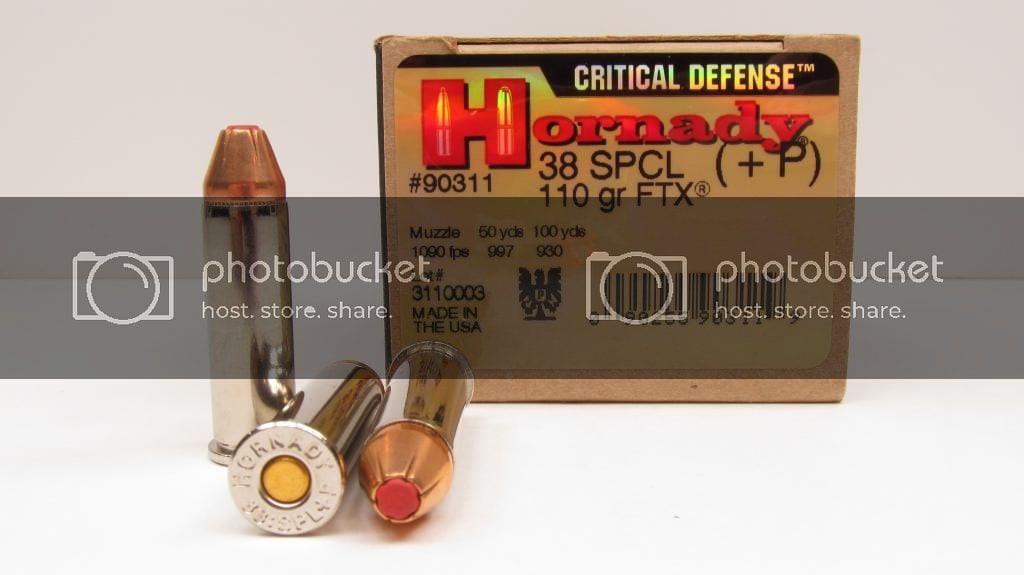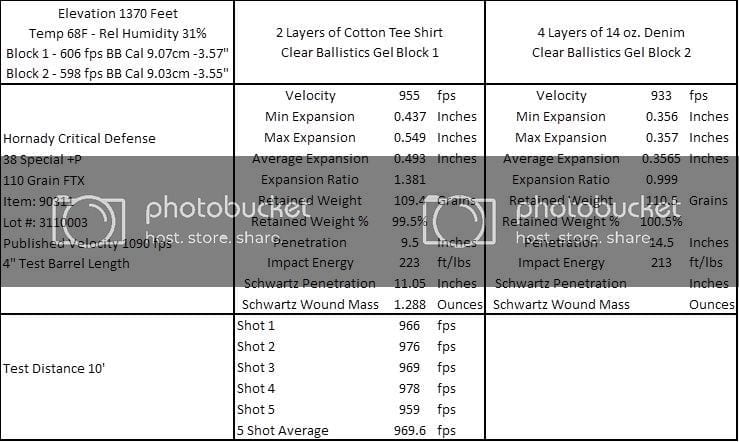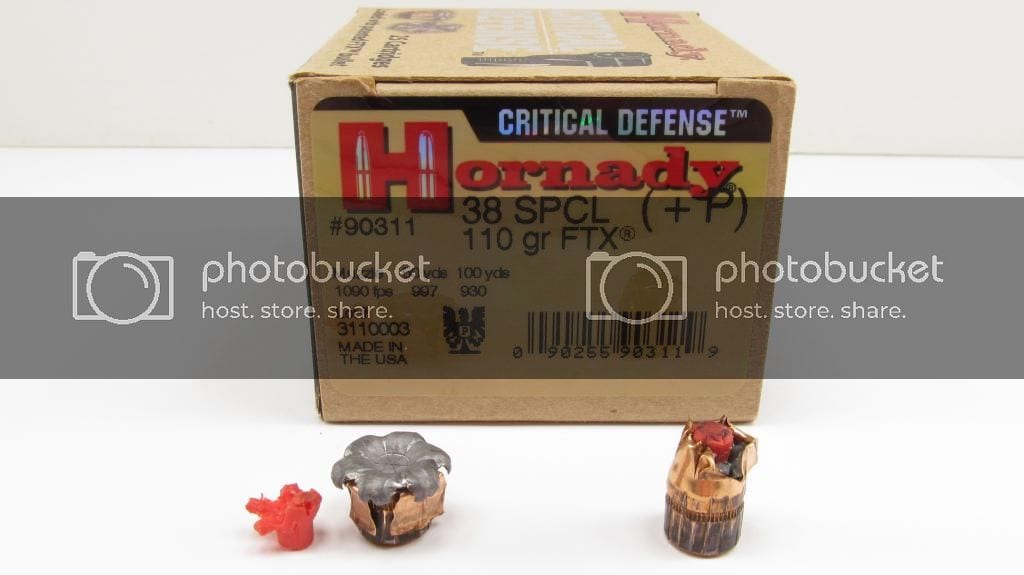
A big thanks to Richard Johnson over at Guns, Holsters, and Gear for providing the ammunition for these tests.
The Critical Defense line from Hornady was created for concealed carry pistols that typically have barrels that are shorter than service length pistols. The entire line has been optimized for short barrel pistols and features nickel plated brass for corrosion resistance and slick feeding. Propellent powder is low flash to protect night vision and also generates lower felt recoil. The FTX bullet has a red polymer plug inserted into the hollow point cavity during production that aids in expansion when the bullet is fired into heavy clothing barriers like denim or leather.
I find it a bit odd that Hornady uses a 4 inch test barrel for their velocity testing of this load. That’s not really a short barrel pistol, but rather what you would consider a service length barrel. I was curious to see if the Critical Defense would perform from a revolver with a barrel length that is slightly less than 2 inches.
Test Pistol:

Test Protocol:
Step 1) Measure and record temperature and relative humidity.
Step 2) Run a 5 shot velocity average over a ProChrono Digital Chronograph at a distance of 10 feet.
Step 3) Run test shots through various clothing barriers and into a block of Clear Ballistics Gel that is calibrated to 10% Ordnance Gel density. Shot distance is 10 feet.
Step 4) Run a 600 fps calibration test bb shot into the Clear Ballistics gel block and record penetration depth to verify density is within specification.
Test Results:

Video Documentation of the Entire Test from Range to Bullet Recovery:
My Thoughts on This Load:
I wasn’t surprised that we came up with velocity results that were less than those published on the box. It was surprising that the velocity difference wasn’t larger when you consider our test barrel was more than 2 inches shorter than the Hornady Test barrel.
The red polymer plug and sub 950 feet per second velocity weren’t enough to cause this bullet to fully expand when fired through 4 layers of heavy denim. The recovered round did show signs of partial expansion. The tee shirt test results were both encouraging and disappointing. I was glad to see the bullet did expand fully, but disappointed by the very limited penetration of this lightweight 110 grain bullet.
Pick or Pan:
To date, we have yet to discover a 38 Special load that will pass the 4 layers of denim test with full expansion and 12 to 18 inches of penetration in ballistics testing media. This load from Hornady isn’t really any better or worse than other rounds tested so far. For this load to be a pick, the light clothing test results would need penetration of 12 inches or more. This may be the first time I’ve actually written this about a Hornady bullet, but the light clothing test shot expanded too much. The expansion and light bullet weight caused the lack of penetration results seen in this test. Personally, I’ll pass on this one.

Disclaimer….This test should not be considered an endorsement or recommendation for the product(s) tested. All tests represent actual performance in ballistics testing media. Terminal performance in all other media will show different results. It is up to each individual to make their own personal decision on which specific ammunition to use for their needs. It’s also critically important to test any ammo in YOUR SPECIFIC FIREARM before relying on it for any purpose.
Ammunition labeled as +P or +P+ should only be used in firearms that have been certified by the manufacturer as safe for the additional pressures generated by these ammunition types.


